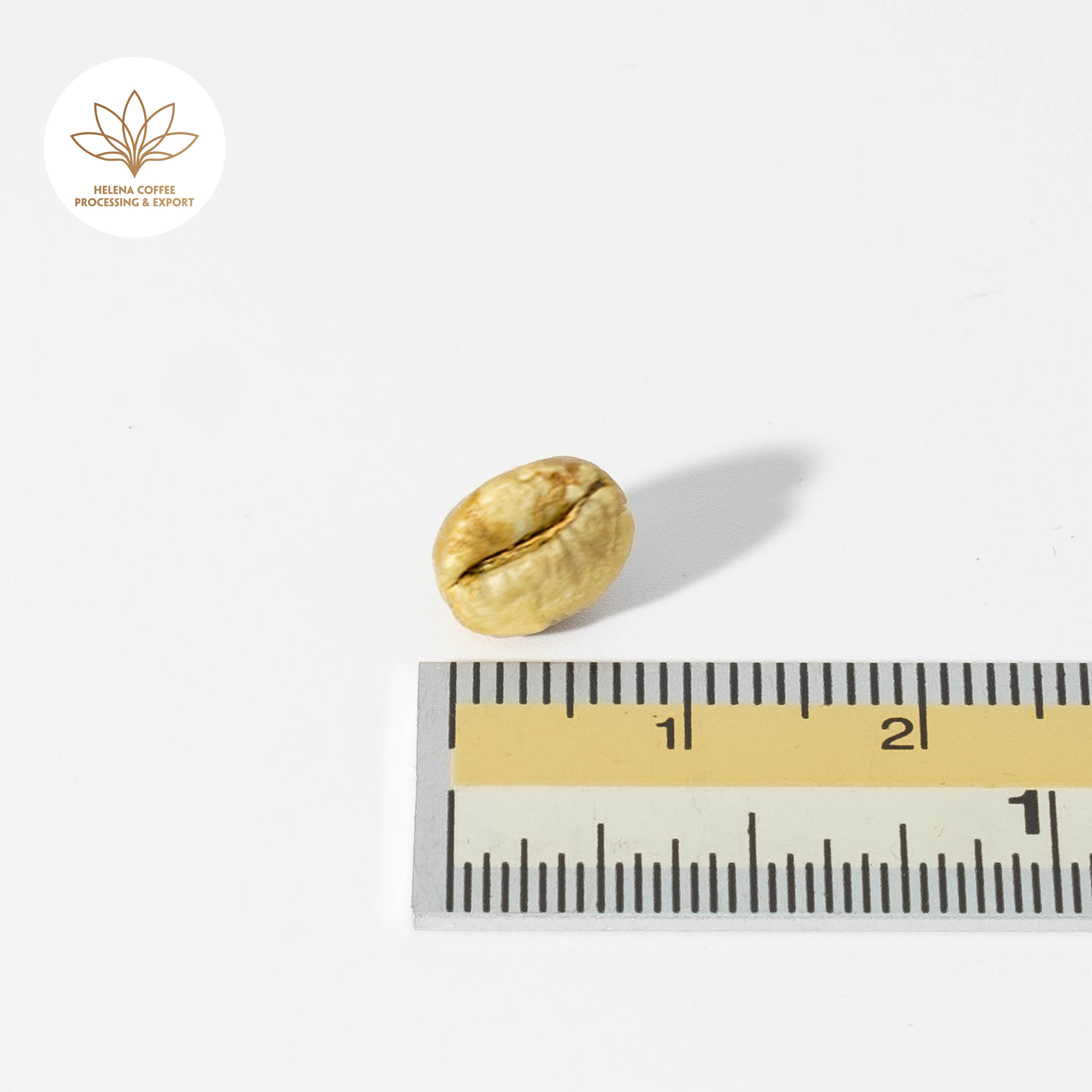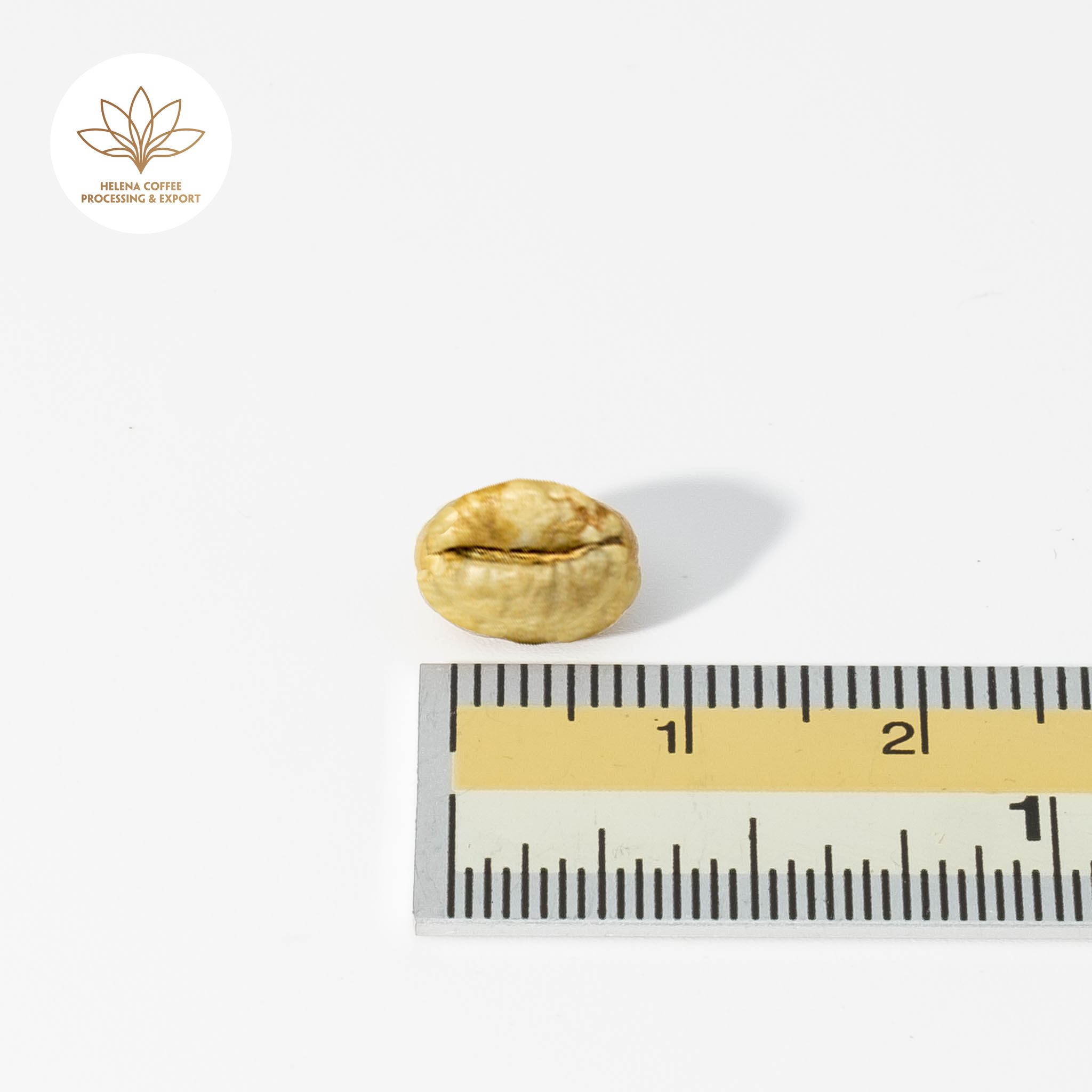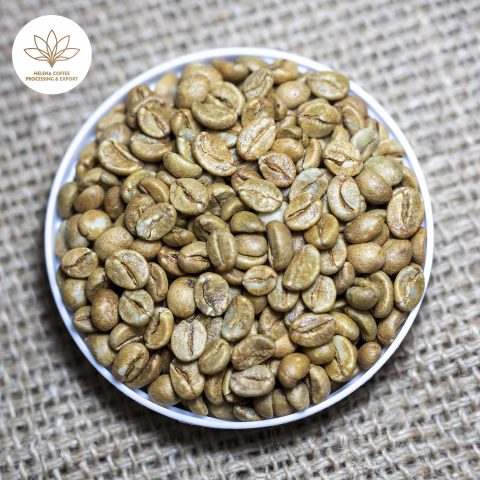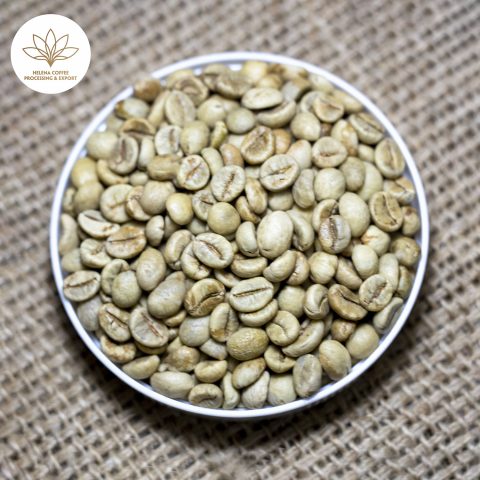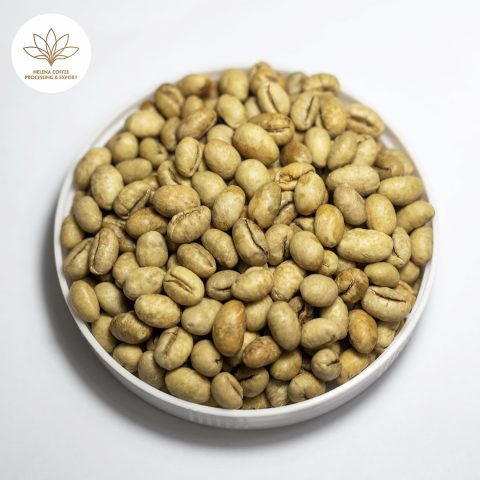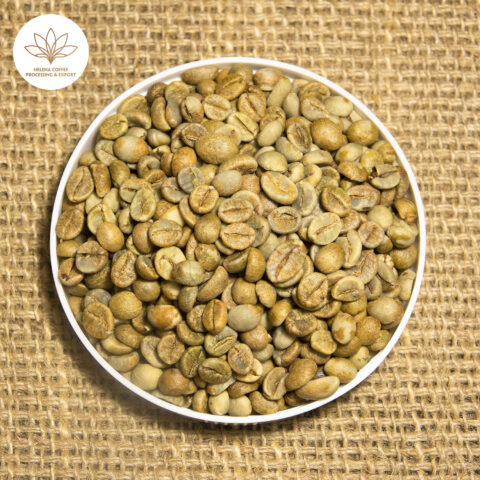Fine Robusta Honey Coffee Beans
- Home
- Products
- Vietnamese Robusta Green Coffee Beans
- Fine Robusta Honey Coffee Beans



Coffee Beans Product Information
Fine Robusta Honey Coffee Beans is a term that the coffee lovers community has frequently mentioned in recent times, not only in Vietnam but also spreading vigorously in the international coffee community. So what is Fine Robusta Honey? What standards are required to be recognized as Fine Robusta Honey? Is this an excellent opportunity for Vietnam (the world’s largest Robusta exporter) to redefine Robusta and rise to the upper hand?
1. What is Fine Robusta Honey?
Fine Robusta Honey is a specialty coffee of the Robusta variety from a growing area with natural conditions along with a special care, harvesting and processing process. or higher (on a 100-point scale) according to the standards and evaluation procedures of the World Specialty Coffee Association (SCA), the World Coffee Quality Institute (CQI) or its online authorized agents (AST). belong to these two organizations.
2. History of Fine Robusta Honey
Since 2010, the Coffee Quality Institute (CQI) has offered the Q Robusta Program to create a common language of quality for premium Robusta coffee (also known as Fine Robusta ). Although arabica is the better-known species in specialty coffees, robusta is also extremely important: It is regularly consumed in many European markets as an essential element of espresso blends, and it is a more productive, more durable species than Arabica, which has become more critical as climate change poses increasing challenges to the industry.
The Q Robusta Coffee Quality Assessment Practice Certificate was developed in partnership with the UGANDA Coffee Development Authority (UCDA) in 2010 and launched globally by CQI to improve robusta quality. , including training coffee experts in the standards for fine Robusta (Fine Robusta).
Robusta has begun to gain recognition in the specialty coffee world. In 2010, the International Coffee Quality Institute (CQI) published its official Fine Robusta Standard and Procedure, adapted from the Specialty Coffee Association’s Arabica grading method. These protocols have participated in the Institute’s Q Grader Robusta Certification, which aims to help the industry distinguish between good and bad Robusta.
In 2019, CQI recognized the increasingly urgent need and value of publishing updated standards and protocols developed for Fine Robusta.
3. Fine Robusta Honey evaluation criteria
Like the Specialty Arabica assessment standard, the Fine Robusta assessment needs to go through two steps:
3.1. Review of Fine Robusta Honey – Green kernel (raw material)
There are two types of defects:
- Primary (main defect) and Secondary (secondary deficiency). Primary defects include errors such as Full black (completely black coffee), Foreign matter (there is a foreign object in the coffee sample), Fungi or Mold (mold or fungus coffee), and Severe insect damage ( insect damage)).
- Secondary defects include errors such as Broken/Chipped, Partial black (partial insect damage), and Partial insect damage (partial insect damage).
Another concept is Full defect. Complete defects can include 1 to 5 primary or 3 to 10 Secondary defects. For example, 1 Full black particle (Primary deficiency) is considered as 1 Full defect. But 3 Partial black particles (Secondary defect) is 1 Full defect.
For each sample of 350g Robusta coffee, for the coffee to enter the “Fine Robusta Honey” threshold, the model must have no Primary defect and only less than 5 Full defects from the Secondary defect. Example: Just a foreign object such as a rock, twig, or dried coffee pods – this lot (lot) is not immediately assessed as “Fine Robusta Honey.”
Under “Fine Robusta Honey” is “Premium Robusta.” To be considered “ Premium,” the lot and sample must not have more than 8 Full defects (including Primary and Secondary defects). Example: Sample has 1 grain of Full black + 1 grain of Full sour + 3 seeds of Partial black = 3 Full defects. This is still a “Premium” qualified egg.
3.2. Review of Fine Robusta Honey – Taste (roasted beans)
CQI has its regulations on how to cup Robusta. Sample Robusta coffee must be roasted ‘darker’ than Arabica (Agtron gourmet color 48 with unground coffee, 78 +/- 1 after grinding). Cupping with the ratio of 8.75gr coffee:150ml water. The remaining regulations, such as water quality, degas time before cupping, water temperature, cupping table area, etc, are all described very clearly.
A scale of 6 – 10 for each attribute to be evaluated: Fragrance/Aroma (dry/wet), Flavor (flavor), Aftertaste (Aftertaste), Acidity (Acidity), Body (‘Thickness’ of coffee in the mouth), Balance and Overall. The maximum total score for seven attributes is 70.
• Uniformity has five boxes because each coffee sample requires five cupping samples on the same table. If all five samples taste the same, the Uniformity score is 10.
• If Uniformity = 10, Clean cup and Automatic Sweetness are ten each.
• If out of 5 cups of cupping, 1 sample is different from the other four samples, the judge deducts 2 points from the Uniformity.
• With a cupping cup with a very different taste, the judge should guess what the defect is and note it. Since the sample has 1 cup with defects, the Clean cup is deducted 2 points. Sweetness is also deducted 2 points.
• Overall (Overview) is based on the judge’s perception of coffee quality.
• Defect: Taint is an error when a cup of cupping has only a slightly different taste, especially in scent. The Fault is a bug that affects the taste of coffee. If there is a Defect, the scorer deducts 2 points for Taint and 4 points for Fault out of the total score.
•Coffee with a score of 80 or higher is considered ‘Specialty Grade Coffee’.
Like the Cupping form for Arabica, the cupping form for Robusta has an assessment of Roast level, Fragrance/Aroma, Flavor, Balance, and Overall.
• With Aftertaste, the form has two options: Brackish aftertaste (uncomfortably salty) or Savory (balanced salty taste, umami). Savory is the more overrated aftertaste.
• There is no point for Body, as Robusta is always considered to have a thick Body.
• Instead of Acidity, the cupping form for Robusta uses the Salt/Acid Ratio scale. The scale for Salt and Acid is from 1 to 6. CQI thinks that Robusta has a lot of potassium to create a certain salinity in coffee, the cupping form must reflect that Robusta is always salty, and this is not a defect. “ Fine Robusta Honey ” is considered to have lower salinity and higher Acidity. The lower the perceived salinity, the higher the ‘Salt’ score. Higher Acidity, higher Acid score. The total score for the Salt/Acid Ratio is 10. (Example: We can only have Salt 5 + Acid 5 = Total 10; cannot have Salt 6 + Acid 5 = Total 11).
• Bitter/Sweet Ratio is also scored from 1 to 6 for Bitter and Sweet. The total score should not exceed ten because Robusta is always considered to have a particular bitter taste. The less bitter the like, the higher the score. High sweetness means a high score.
• Mouthfeel is rated as Rough (uncomfortably rough feeling) or Smooth (smooth).
• Similar to Arabica, if 5 cups of cupping have the same taste, the score of Uniform cups and Clean cups is 10. For each cup of cupping that has a very different taste and is Defect, the scorer will deduct 2 points.
• If the sample has Taint or Fault, the scorer subtracts 2 or 4 points from the total score (same as cupping Arabica).
As you can see, cupping Fine Robusta Honey is quite different from cupping Arabica. The most significant difference is probably with Arabica. If the Uniformity score is 10, the regular coffee sample is always +10 points for Sweetness. Meanwhile, when grading Robusta, R Grader must consider the Bitter/Sweet Ratio and understand the criteria for Robusta to be considered sweet.
With a score of >90, this sample is considered “Very Fine Robusta Honey.” “Fine Robusta Honey” is a sample with scores from 80 to 90. From 70 to 80 points, the sample is considered “Premium Robusta”.
4. The Rise of Fine Robusta Honey
Along with climate change, the share of Robusta coffee beans compared to Arabica has grown strongly from 25% to 40% of global coffee production. There are emerging countries like China, Myanmar, and Thailand that are making impressive strides in improving their coffee quality based on training courses from the Coffee Quality Institute and other interested parties. A particularly interesting emerging trend is the rise of fine Robusta (Fine Robusta Honey).
Robusta is often overlooked because of its poor test quality. Typically, commercial Robusta beans are traded with hundreds of defects and their tested quality is not preferred. But what if Robusta is handled properly? The impact can be huge for not only the farmers who produce it but for everyone in the supply chain.
5. Where to buy Fine Robusta Honey green coffee?
The seller of high-quality and Fine Robusta Honey green coffee at an affordable price, Fine Robusta Honey Coffee is delighted to have years of expertise in production, processing, and quality control.
Helena Coffee can optimize the quality control process and product stability thanks to the successful construction of a closed model that spans the stages of product collection, selection, and preliminary processing through to operations, supply, and distribution. As a result, Helena Coffee can offer customers products that are both very reasonably priced and of exceptionally high quality.
Innovative processing techniques have resulted in a range of high-quality coffee that is priced reasonably. That is what makes Helena Coffee’s Robusta Honey green coffee unique. Please get in touch with us if you’re keen to learn more about this line.
Certifications
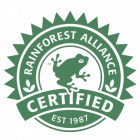

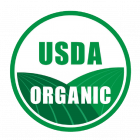
Exploring Vietnam Robusta: Bold Flavor Profile and Unique Taste
Vietnam shines as the top global exporter of robust and flavorful Robusta coffee, with its lush Central Highlands provinces—Kon Tum, Gia Lai, Dak Lak, Dak Nong, and Lam Dong—dedicating around 90% of their coffee fields to this thriving crop.
This bountiful bean also thrives in midland regions like Vung Tau and Dong Nai, known for their high yields. Delve into the aromatic world of Robusta coffee through renowned growing regions such as Pleiku, Ayun Pa, Buon Ho, and the iconic Buon Ma Thuot—celebrated as Vietnam’s coffee capital.
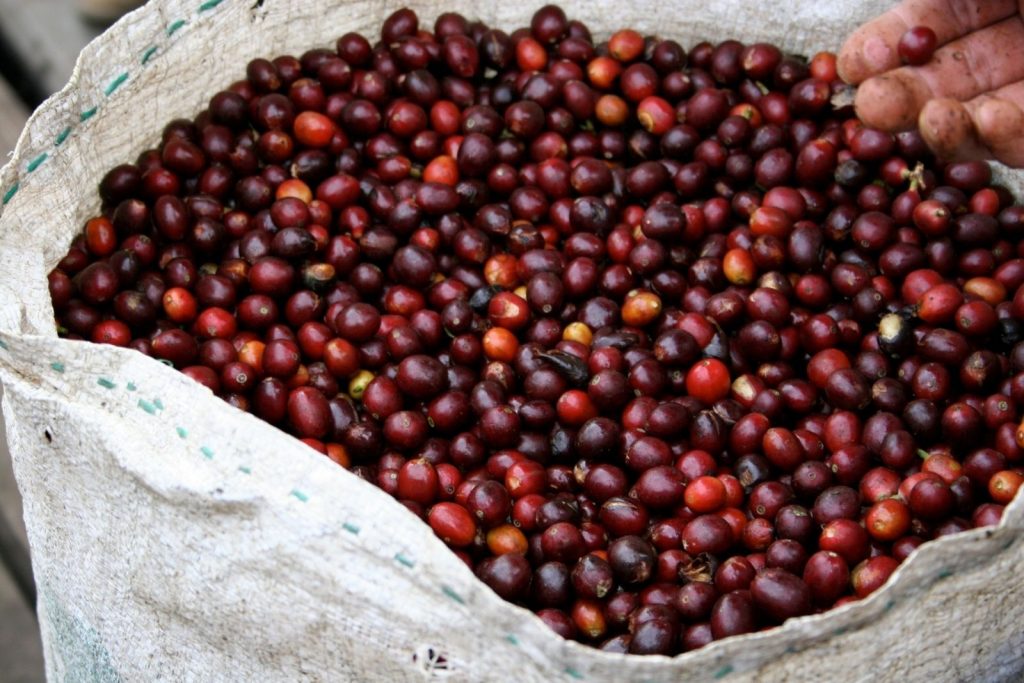
Attitude
Nestled at an elevation of 500m-600m above sea level, the Central Highlands of Vietnam boast rich red basalt soil and a cool, rainy climate—perfect conditions for cultivating exquisite Robusta coffee for centuries. This region’s beans are famed for their potent caffeine content, bold flavors, and low acidity, enticing coffee aficionados worldwide.
Yet, the allure of Central Highlands coffee lies in its unique regional nuances. Some beans enchant with silky notes of butter, oil, or caramel, while others capture the essence of the sun-kissed highlands and crisp mountain breezes. Discover the captivating tastes that have made Central Highlands coffee a cherished treasure for generations.
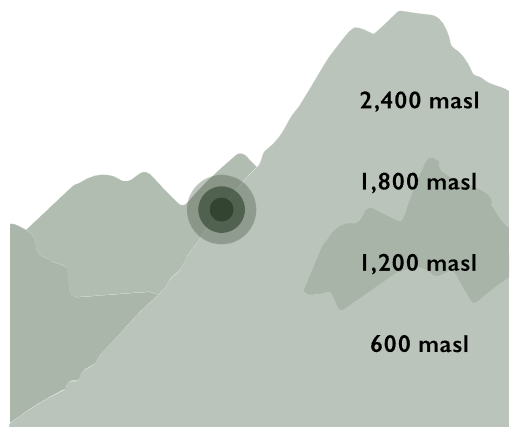
Environment
Climate factors such as precipitation, temperature, and humidity play a crucial role in shaping a coffee’s maturation, overall flavor, and quality. Coffee-producing countries either boast naturally ideal conditions for growth or employ innovative techniques to enhance their ecosystems.
Robusta coffee, in particular, thrives in a harmonious dance with its environment, flourishing under the tender care of nature’s elements. As you indulge in its rich, bold flavors, you’ll savor the exquisite results of this intricate interplay.
Precipitation
500m – 800m
Temperature
17℃
Humidity
71%
Processing
Coffee processing involves separating the bean from the cherry, with popular methods like washed, dry, and honey, among others. Each technique emphasizes different aspects to create unique flavors, inviting you to explore and savor the diverse world of coffee.
Washed
Fully Washed
Dried
Sun-dried
Natural
Fully Washed
Timeline
Harvest and export times are based off when a particular coffee will be at its peak quality. Cherries picked at the start of the harvest season tend to be underdeveloped, and those picked at the end are often overdeveloped, so producers aim for that sweet
Harvest
Export
Dec – Sept

Dak Lak Viet Nam
Dak Lak Province, nestled in Vietnam’s Central Highlands, earns its title as the “capital” of Vietnamese coffee with its sprawling green coffee fields cascading across the region’s basaltic hills, bathed in sunlight and caressed by gentle winds. Home to numerous distinguished coffee brands, Dak Lak’s exceptional beans have captured hearts worldwide, with exports reaching over 80 countries and territories, solidifying its global reputation for exceptional coffee.

